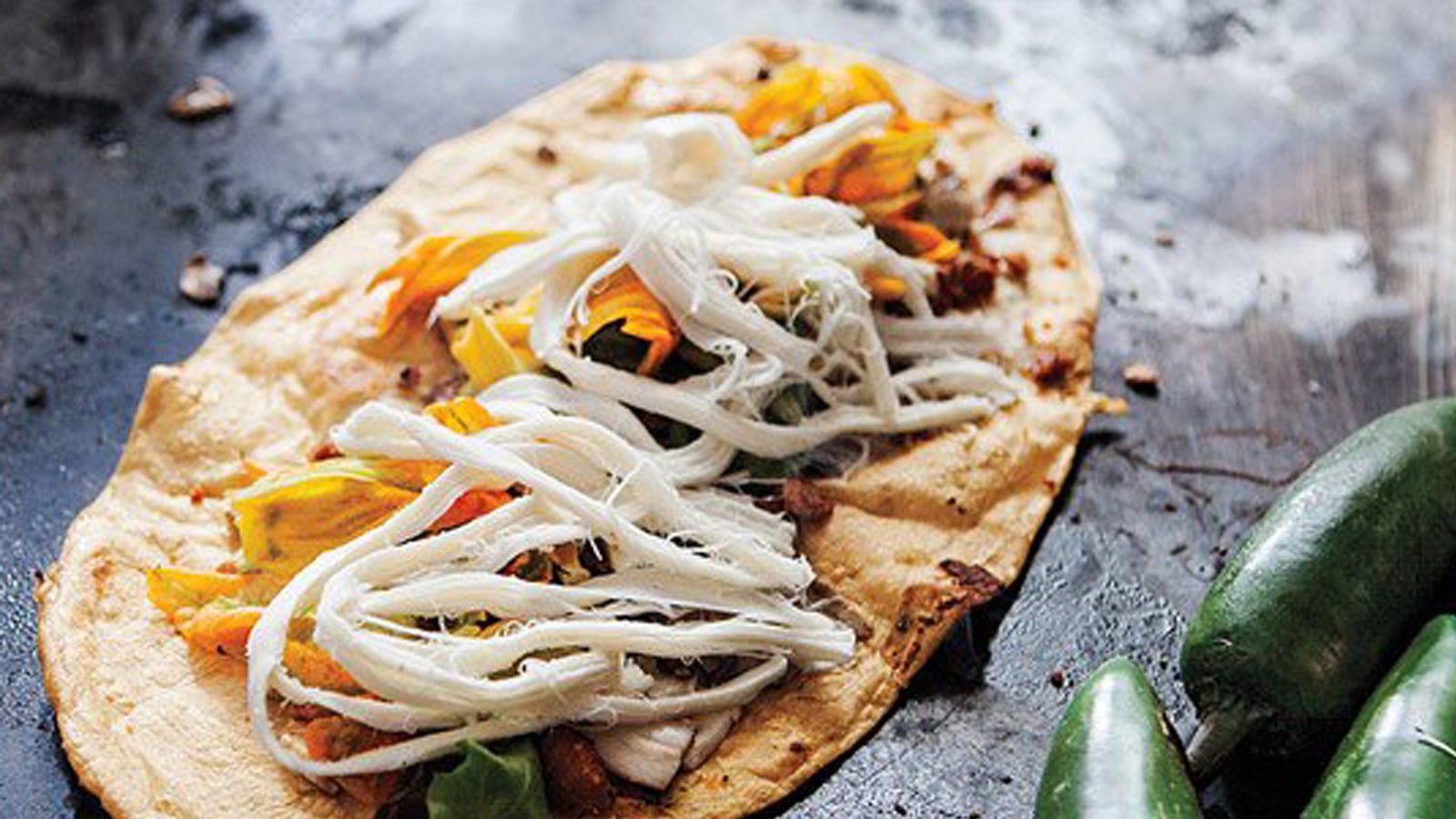There is a man selling oro mangoes at the farmers’ market in Malinalco who cuts them up into small, uneven chunks and serves them in a disposable cup, and I strongly suggest you buy one because it will be the best mango to ever pass your lips—a record that will stand for, oh, a minute. The oro (“gold”) is just a workaday mango, the man will tell you, about as good as a petacon (“butt cheek”), but nowhere near as good as the king of all mangoes, the mighty manila, a golden lobe of tropical acid-sweet balance that arrives peeled and gamely impaled on a wooden stick and dusted with chili powder.

I hope you’re hungry. Because there are also pig’s-brain quesadillas; pancita, a deeply savory beef broth with chunks of tripe finished with fresh oregano and a squeeze of lime juice; tacos filled with pig’s feet cured in vinegar; woven baskets heaped with just-baked bread; quesadillas stuffed with squash blossoms; heirloom tomatoes (which, around here, aren’t considered heirloom yet); free samples of chicozapote, a red-fleshed fruit with a flavor somewhere between nutmeg and cinnamon; unpasteurized cow’s milk cheese; tamales; enchiladas; fresh-squeezed orange juice; and locally grown, locally roasted coffee beans.
And don’t be surprised if you see a dude clopping down the street on a horse and dismounting to eat—what else?—a taco. He is not an attention-seeking foodie hipster reveling in trumped-up “authenticity,” or some former CEO turned organic vegetable gaucho. He is a man who does not own a car. Brooklyn—to say nothing of Austin and Portland—has nothing on this place.
Malinalco is a small town about seventy miles southwest of Mexico City, and here is the most unbelievable thing about it: The daily market, which brings the town square to a superbly aromatic halt every Wednesday, Saturday, and Sunday, is not considered a standout. People in other parts of Mexico are not—I repeat, not—talking about it, because they have their own equally good and possibly even better farmers’ markets.
I’d come to Mexico to partake in a culinary tour, the kind of region-to-region food pilgrimage more commonly experienced in the countryside of Italy or France, where one inches along, town by town, indulging in local specialties and roadside delights. The plan was simple: Land in Mexico City, meet up with a driver who came recommended, head south to the state of Morelos, which is famous for pork and chilies and their infinite permutations, then east to Puebla, where mole was invented (maybe), and finally back to Mexico City, a city that never sleeps in large part because it never stops eating. Before you hurl the magazine across the room in jealous disgust, let me assure you that my purpose is greater than mere indulgence—although there will be no shortage of it. I am here to ask the following questions:
1. Is Mexican food in Mexico really so much better than the Mexican food in America? 2. If so, why?
As far as question one goes, I had the answer—a vigorous, enthusiastic yes—long before meeting the mango hombre. Barely an hour south of Mexico City’s Benito Juárez International Airport, I asked my driver to pull off the toll highway on the edge of La Marquesa National Park, remarkable for its towering conifers and green glades. In the village of La Marquesa, the place to rent an ATV or horse, I found a taco stand, which is to say a shedlike structure so rickety as to invite a tornado. In front of it stood a beat-up stove on top of which sat a shoulder of pork braising in hot manteca (lard). I sat and ordered. Plastic cutlery arrived, followed by a container of chopped onion and cilantro. A woman laid down a paper plate with two warm tortillas cradling chunks of pork. I dressed the taco, expecting it to be terrible, mentally rehearsing the apologetic hand gestures I would use as I sprinted from taco-stand squalor back to the car. Instead, the taco was not only the best I had ever eaten in my life, it made every previous taco seem like a cultural atrocity. I reeled at the sheer corniness of the tortilla, the porkiness of the pork, the savory burn of the salsa, and the bright crunch of the cilantro and onion.
On to question two: Why?
This is, for me at least, one of the burning questions of our time. It is a question that has nagged me since the summer of 1996, when I spent three months as a student intern in suburban Brussels in a state of constant awe over the quality of pastries, chocolates, mussels, beer, sausages, and so forth. Why did Belgians eat so well? I wondered. Why, for that matter, do Italians? And the Japanese? (And, if you ask me, the Koreans.) Why do Germans, who are better organized and wealthier than Italians, visit Italy by the busload just to eat? Shouldn’t the food be better in Germany?
All of which makes Mexico a particularly interesting case. It is, by a long shot, much poorer than its neighbor to the north. So why is the food so good? How can a random roadside taco be better than the most critically acclaimed, cutting-edge taco in all of New York City? (I’ve had both.)
Read the full story at Condé Nast Traveler.






